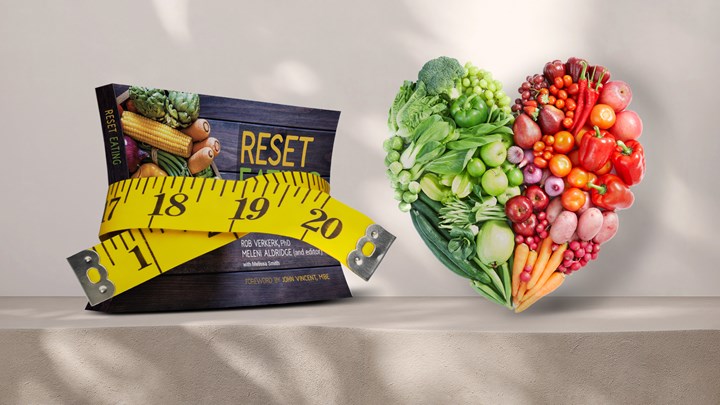Content Sections
The story that made headlines around the world about fibre (see The Guardian) and at the end of last week isn’t going to be a flash in the pan. On the back of it, you can be sure it will be used by governments and the food industry to get us back onto the bread and cereals wagon.
Low carb diets are already under attack because of it – and that battle will continue. The grain and baking industries are going to be thanking their lucky stars that they now have a potent piece of science to justify their existence – and their profits. The public will be left in even more of a quandary: should they get back to eating bread and wholegrain cereals as their staples – or dramatically cut them along with grain-based carbs, the approach that’s been heralded and celebrated by such a cross-section of our society, from celebrities and politicians, through to social media influencers and world-class athletes.
The landmark fibre study
The study was big. It wasn’t just one systematic review and meta-analysis, it was multiple ones. It looked at data over 50 years, from when these kinds of data were first recorded to the near-present day (2017-18). The methodology was reasonable as far as this study is concerned, so we won’t be picking it apart. The results were entirely expected. Previous studies had already shown that lots of fibre, a lot of which, but far from all, has traditionally come from wholegrain and cereal sources means less heart disease, cancer and early death. This was confirmed previously in two studies published in major journals back in 2016, one in the British Medical Journal, the other in Circulation.
This landmark study was commissioned by the World Health Organization and led by Prof Jim Mann and his research group at the Department of Medicine, University of Otago, New Zealand. The main finding was that the sweet spot for fibre intake, for those wanting to live a longer, healthier life was between 25 and 29 grams of fibre per day.
Again, we know that. All long-lived populations eat lots of fibre. Many also eat non-digestible, so-called ‘resistant starch.’ Both are great for gut microbes. The science on this is clear and undisputed. So while we can all agree that getting 30 or so grams of fibre a day is what we should all target, it’s a completely different question to argue that means eating bundles of grains. This is another classic case of overlapping risks and benefits, something we’ve previously shown for vitamins and minerals.
What’s wrong with the study’s interpretation
The thing we’ve been gagging over these last few days since the study was published online is that it is being used to push whole grains and cereals.
With the following view expressed by the study leader Jim Mann, extracted from The Guardian and also published in the Irish Times, it’s easy to see where this will go:
“It was very difficult to have high levels of fibre on a low-carbohydrate diet unless you took fibre supplements, said Mann. And “there isn’t the huge body of evidence that we’re talking about” for supplements being beneficial, he said, adding that “it’s pretty well impossible” to get enough fibre from fruit and vegetables alone.”
There are three stand-out misrepresentations of the data and how that is likely to be applied to the public, both by governments and the food industry. They are:
- MISREPRESENTATION 1: It’s absolutely possible to get over 30 grams or more of fibre a day from a grain-free diet, as we show below. Jim Mann needs to do his research before he claims that “it’s pretty much impossible” to get enough fibre from vegetables and fruit alone
- MISREPRESENTATION 2: Current bread flour qualities, fermentation, baking methods, food processing techniques and bread compositions are not as they were 30 to 50 years ago
- MISREPRESENTATION 3: The health problems of today, in which around one-third of the population of industrialised countries have deranged metabolism caused by insulin resistance, obesity, type 2 diabetes and related conditions, doesn’t mean we can apply findings that were relevant to a historic, healthy population. Yet that’s what’s being done here. That’s also what we can expect the WHO and national authorities, aided and abetted by the grain and food industry to do.
There is so much more to say – but this is an occasion where perhaps less is more. We’re looking at all avenues for making these and related points to the WHO and those in public health decision-making positions in governments.
And here’s our figures, calculated using data from the USDA’s Food Composition Databases.
| Food Item Description | Portion Size | Fibre in portion |
|
Breakfast |
||
| Poached Egg | 142g | 0 |
| Spinach | 25g | 0.60 |
| Butter | 10g | 0 |
| Tomatoes | 9g | 0.11 |
| White Mushrooms | 50g | 0.50 |
|
Lunch |
||
| Wild Samon | 140g | 0 |
| Rocket (Arugula) | 10g | 0.16 |
| Raw slaw | ||
| Red Cabbage | 50g | 1.05 |
| Carrots | 20g | 0.56 |
| Fennel | 10g | 0.31 |
| Red Radishes | 5g | 0.08 |
| Tahini | 10g | 0.93 |
| Olive oil | 20g | 0 |
| Lemon juice | 30g | 0.09 |
| Maple syrup | 5g | 0.01 |
| Apple (with skin) | 80g | 1.92 |
| Walnuts | 20g | 1.34 |
| Brazilnuts | 15g | 1.13 |
| Hazelnuts | 15g | 1.46 |
|
Dinner |
||
| Bean Stew | ||
| Aduki Beans | 100g | 7.30 |
| Onion | 15g | 0.26 |
| Garlic | 2g | 0.04 |
| Olive oil | 20g | 0 |
| Red Peppers | 21g | 0.25 |
| Broccoli | 60g | 1.68 |
| Green beans | 30g | 0.96 |
| Butter | 10g | 0 |
| Coconut Milk (tinned) | 7g | 0 |
| Cauliflower | 20g | 0.46 |
| Savoy Cabbage | 21g | 0.59 |
| Leeks | 14g | 0.14 |
| Summer Squash (with skin) | 15g | 0.15 |
| Fresh Parsley | 5g | 0.17 |
| Dried Basil | 5g | 1.89 |
| Dried Oregano | 5g | 2.13 |
| Raspberries | 100g | 6.50 |
| Creamed Coconut | 30g | 0.30 |
|
Total |
33.04 |
Please share this story as widely as you can and feel free to re-publish it on other websites with due acknowledgement to the Alliance for Natural Health International (www.anhinternational.org).








Comments
your voice counts
16 January 2019 at 11:53 pm
Personally I try to avoid any guidance from the WHO ... some time ago they decided to join the ludicrous 'five-a-day' bandwagon along with some deluded health professionals. The WHO include Baked Beans as a recommended five a day healthy food - what are they thinking? Yes we know that beans contain fibre, but so do many other non-processed, healthier foods. Unfortunately for the NHS and us taxpayers, dumb consumers load up on a double portion of baked beans (from a tin) that are drenched in sugar, preservatives and other unhealthy stuff in the mistaken belief that a double helping of baked beans now leaves just 3 of the five-a-day servings to worry about. Concerned about your health? Time to get real!
17 January 2019 at 4:06 am
A tablespoon of raw rolled oats stirred into the morning blender mix, (with 2 raw egg yolks, shells well washed, whites cooked to stop arterial inflammation, a cause of artery calcification), is all that one needs, instead of laboriously counting the mgs iof fiber in every morsel. 3 main causes if heart disease are well documented.. also are high homocysteine, (needing 3 B vitamins, to lower.. not much in cooked grains, as 90% of Bs are destroyed in heating), , and high triglycerides.. these are RAISED by grains,
Cancer causes are numerous. Clark H R, PhD ND The Cure and Prevention of All Cancers, 2007, 600pages.. Maybe lower gut cancer has a motility connection but colon cancer associated with pyrroles and acetic acid!. All gut cancers are associated with nitrates.
The study ignored all the harmful effect of grains. All grains are high in lectin plant phenols, chemicals that desensitize cell membranes to insulin, causing insulin over production. Grains are also high in leptin plant hormones that interrupt signaling between the liver and pancreas, causing insulin disruptions. These 2 cause obesity and diabetes2. Wheat and most other grains raise blood sugar. A slice of organic whole wheat bread raises blood sugar more than a candy bar. Celiac diisease too!
Any well-read person will ignore this nonsense. The masses
don't care what they consume, as long as it tastes nice and fills them up. If fod is on the market shelves so must be OK, right? The poorly read who follow the mainstream's ''healthy eating' baloney.. .. as that's their Gospel, will suffer. eg RDA for vitamin C is 100mgs. Yet 3gms Vit C are needed to fully rev-up the killer leucocytes. Clark H R PhD ND 1995. 2X 50,mg Vit C oranges are advised.. BUT fresh supermarket oranges have been measured with ZERO C! Many foods noted to have masses of Vitamin C, in reality need to be eaten by the tens of Kilos to get the 3 gms of C.
Did the grain Industry fund this meaningless project?
17 January 2019 at 11:59 am
Yes raw rolled oats are often recommended by nutritionists & dietitians. However, what they don't often mention is that oats contain around twenty times MORE Omega-6 (pro-inflammatory) than Omega-3 (anti-inflammatory) essential oils. By simply adding whole or ground neutral tasting Chia seeds to oats or anything else for that matter, the consumer can instantly create a more favourable Omega-6/Omega-3 ratio. Simple!
18 January 2019 at 9:18 am
While I broadly agree with what you're saying, but I do think fibre in low carb diets is an issue, as this report makes out. This otherwise wonderful day diet, that you use as an example - super high in veg as it should be, and a portion of healthy beans (a major source of fibre) is over 100g of carbs so is not going to be ketogenic. The beans alone account for 63g of carbs. If you took out the highest carb foods, often not recommended on keto diets (or in v.low levels) - beans, apples, carrots, raspberries - that's half the fibre intake gone (16.8g). It is genuinely hard to be on a ketogenic diet and get 30g of fibre. Personally, I recommend adding a flat teaspoon of glucomannan fibre (only 3 g but at least 50 times as effective so equivlaent to well over 30 g fibre) to a glass of water if going low carb/keto or following a low GL (45 GLs) diet instead, which can include all these foods.
23 January 2019 at 11:29 am
Hi Patrick – looks like there’s a bit of confusion here. The purpose of the nutritional analysis we did was to show just how easy it is to get 30g or more of fibre from a grain-free diet (as proposed by David Perlmutter and others), in other words, just from veg and fruit – which the study authors have broadcast around the world as “next to impossible”. Therefore, the day’s eating we’ve presented was in no way meant to be ketogenic, but, it could be considered low carb high fat (LCHF) by most definitions given its macro composition: protein (from egg, salmon and beans) 18%, fat 61% and CHO 21%, with a fibre content of 33g. We agree glucomannan/konjac can be useful, but for those who suffer digestive discomfort, gas or bloating from it, we think it’s useful for people to know you can still hit the 30g target from veg and fruit alone. Hope this clarifies things!
27 January 2019 at 2:38 pm
Thank you. How many grams of carbs is in your example menu? Most definitions of low carb is either 50g or 100g a day or, according to wikipedia's entry, 20% of calories. For a 2,000cal diet, with 4 cals per gram for carbs that means 100g. When Jim Mann was quoted as saying“It was very difficult to have high levels of fibre on a low-carbohydrate diet unless you took fibre supplements" do we know what his definition of low-carb diet is? I'm not sure if that's in his paper. My view is that 'misrepresentation' might be too strong a word in relation to this issue.
Your voice counts
We welcome your comments and are very interested in your point of view, but we ask that you keep them relevant to the article, that they be civil and without commercial links. All comments are moderated prior to being published. We reserve the right to edit or not publish comments that we consider abusive or offensive.
There is extra content here from a third party provider. You will be unable to see this content unless you agree to allow Content Cookies. Cookie Preferences